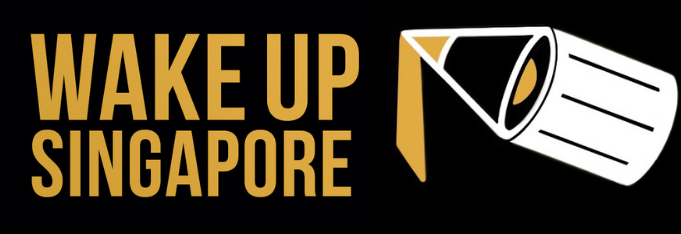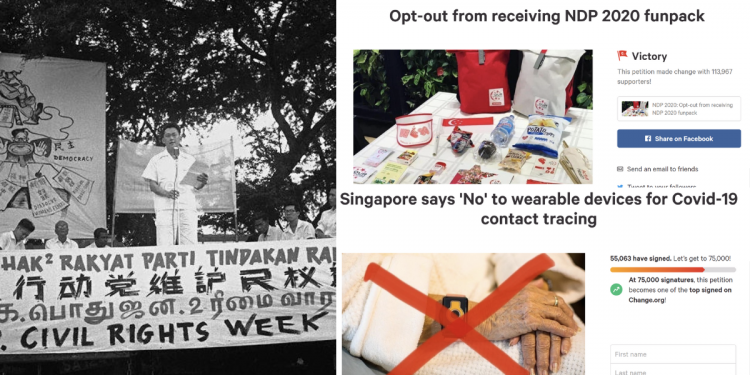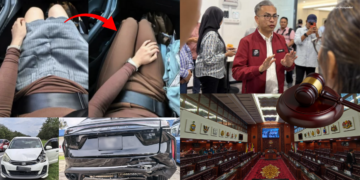Does making noise work?
A rich history of Petitioning
Petitions are a long-standing staple of civic engagement in Singapore. Even the People’s Action Party (PAP), when it was an opposition party in the 1950s, regularly submitted petitions to the government protesting a variety of issues.
In 1956, for instance, the PAP organised a Civil Rights Convention opposing the government’s dissolution of several organisations and the detention without trial of seven unionists. During the Civil Rights rallies, PAP members went around asking attendees to sign a petition that demanded for the immediate release of the detained individuals.
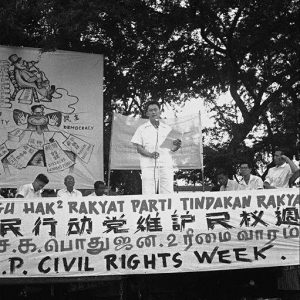
In later years, Nanyang University students marched to City Hall with a petition protesting widespread structural discrimination against the Chinese-educated in general and Nanyang University in particular. Five students walked into City Hall to give Deputy Prime Minister Toh Chin Chye their petition while 500 Nanyang students gathered outside on the Padang — one of Singapore’s largest public squares — to deliver speeches and register their opposition.
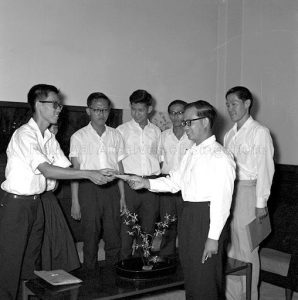
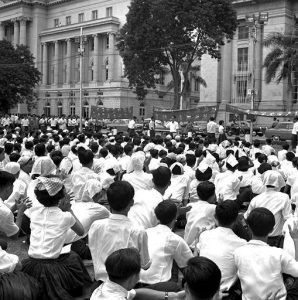
Today, petitions have moved onto the online realm with many turning to website like change.org to voice their concerns. But whether it be online or offline, the perennial question has always been: do petitions work? In this article, we will present five examples of when petitions have had an impact.
1) Graduate Mothers Scheme
One of the most significant uproars against a government policy in the last forty-years was the 1984 Graduate Mothers Scheme. A year before the scheme was introduced, Lee Kuan Yew expressed dismay over the fact that graduate women were marrying less and having fewer children than non-graduate women. These concerns were rooted in Lee Kuan Yew’s eugenics beliefs. Throughout his life, LKY argued that if the less-educated had more children than the better-educated, Singapore’s future would be grim: “Unless the better-educated and better-equipped stake out a bigger part of the future for their progeny, then the future will be that much poorer for all.”

In 1984, these eugenics beliefs were put into structural practice with the Graduate Mothers Scheme:
To encourage more educated women to work and, at the same time, have more children, the government offered child relief incentives like bigger tax cuts for graduate women having their second and third children. These incentives were later extended to women with at least five G.C.E. ‘O’ Level passes. On the other hand, low-income families – those with a family income below $1,500 per month and parents with less than ‘O’ level qualifications – are given cash grants of $10,000 if the mother agrees to undergo sterilisation or ligation after her first or second child when she is under 30 years old (Jenny Lam Lin, Voices & Choices: The Women’s Movement in Singapore, p. 107).
Many were appalled with this policy, including the very women who this scheme was said to “benefit” – university-educated women. Quickly, a petition circulated among students at the National University of Singapore and garnered 3,000 signatures. These petitions were coupled with a slew of other actions, like letters to the editor, a protest by 500 students at Nanyang Technological University, forums debating the policy, discussions with politicians at Meet the People sessions and more.
Even a young and vocal critic of the government by the name of Vivian Balakrishnan, who would later join the People’s Action Party, wrote into the Straits Times:
The child of an educated parent already has significant academic advantages. This scheme will further handicap the child who does not have the good fortune to be born to a graduate mother. If we allow changes like this to ossify, we will inevitably develop a rigid class system.

Initially, the government dug their feet in. National Trades Union Congress (NTUC) Secretary General Ong Teng Cheong argued that even if the majority of the population disagreed with the government’s approach, they should carry on anyway. “If our government only pursues popular policies to please the people,” he said, “then we are doomed.”
To the Government’s dismay, the pressure from the public became insurmountable. Not long after announcing the policy, the government was forced to scrap the Graduate Mothers’ Scheme. Making noise had worked.
2) Tudung Issue
In more recent years, petitions have gone online. Some of the earlier and more popular of these petitions were those related to what has been called “the tudung issue,” in which Muslim women who don the tudung may be barred from doing so in certain settings.
In October 2013, a petition appeared on Avaaz.org by a “Syafiqah K.” calling on the government to allow Muslim women in Singapore to wear the tudung in the workplace. The petition aimed to reach 20,000 signatures but disappeared a week later after it had reach about 12,400 signatures. Less than two months later, Prime Minister Lee Hsien Loong held a “closed-door dialogue with [the] Malay-Muslim community.”

In the subsequent years, a host of new petitions, posts, and videos sprung up reiterating the same demands: for the government to ease its restrictions on the wearing of the tudung in workplaces and at schools. Instagram pages were launched, like @LepakConversations, that lobbied for the repeal of such policies.
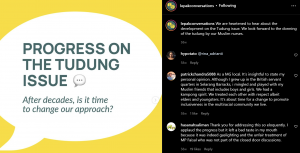
In August 2021, after more than a decade of pressure from petitions which helped spur larger online and offline discussions and criticisms, the government conceded that nurses would now be “allowed” to wear the tudung at work.
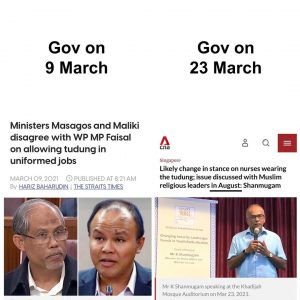
Although we will never know for sure, as no Government will readily admit that it was persuaded or swayed by petitions, it is likely that the voices of the people helped tip the scales.
3) Wearable Contact Tracing Devices
In June 2020, Dr Vivian Balakrishnan, who was then Minister-in-charge of the Smart Nation Initiative, responded to a question in Parliament over whether the TraceTogether app would be made mandatory for people in Singapore. At the time, TraceTogether still had a low take-up rate and there were concerns among some members of the public about the government’s access to their data. Minister Balakrishnan responded by saying:
We have decided… at this point in time, not to mandate the compulsory use of TraceTogether. Instead, we are developing and will soon roll out a portable wearable device that will achieve the same objectives as TraceTogether, but will not depend on possession of a smartphone.
The Minister went on to say that a wearable device “would be more inclusive” for all. Conversation quickly exploded on social media about wearable contact tracing devices.
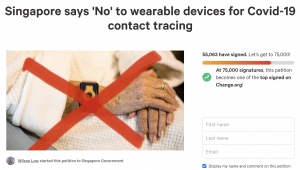
Overnight, tens of thousands of people signed a petition opposing any measures to mandate wearable tracking devices. More than 50,000 signed the petition.
Prominent figures like the Singaporean actor Hossan Leong took to facebook to write, “Respectully… No. I have done everything. Downloaded the app, SafeEntry…but wearing a device is one step too far.”
Thankfully, mandatory wearable devices never came to be.
4) NDP Funpacks
While debates raged on in June 2020 regarding wearable contact tracing devices, in May 2020 another debate was at the centre of attention: National Day Rally Funpacks.
Due to COVID-19 safe-distancing restrictions, the 2020 National Day Parade (NDP) for the first time in its history would be scaled down and have no physical audience – aside from some politicians. In the absence of a physical rally for members of the public to attend, the NDP executive committee announced that every Permanent Resident (PR) and Singapore citizen family would be sent an NDP fun pack. As Mothership reported:
Chairman of the NDP executive committee, Brigadier-General Frederick Choo, said that Singaporeans have a “very close affinity with” funpacks, and that every Singaporean and PR household will be taken into account.
He estimated that around 1.2 or 1.3 million households will be able to get their hands on the funpack, and assured that every Singaporean who “wants to collect a funpack” for the household, will get a funpack.
Immediately, a large number of Singaporeans opposed the measure, calling it both environmentally and financially wasteful.

A petition was launched that commended “the effort on the part of the organisers to rally the population and spur happiness and positivity” but nevertheless opposed the issuing of fun packs to all Singapore citizen and PR families. The petition went on to argue that:
there could be a much better use of the resources used to make roughly 1.4 million funpacks; such as the perishable goods inside the funpack, the novel single-use items, the manpower to acquire, make and distribute the funpacks and not to mention the planning of it. … At a time when a recession is looming over our economy like none before, and unemployment on the rise; we could use these resources to help those in need in these unprecedented times.
About 114,000 people signed the petition and within just a few weeks, the organiser of the petition was invited to discuss the issue with the NDP organising committee.
Though not all the demands of the petition were heeded, the organising committee nevertheless announced that they would be “reducing the production of the funpacks to 80% of the initial amount.” No longer would the fun packs be sent to households, but instead Singapore citizens and PRs could go collect from designated locations across the island.
5) SQ Flights to Nowhere
One of the hardest hit sectors of the Singapore economy due to COVID-19 restrictions was the aviation sector. In September 2020, with a plummeting revenue stream, Singapore Airlines proposed setting up “flights to nowhere.” The flights to nowhere would invite Singaporeans to travel on Singapore Airlines planes around Singapore, for both the experience of being on a plane again and in support of keeping Singapore Airlines afloat.
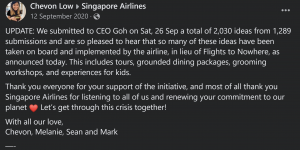
Many Singaporeans not only organised a petition online to oppose such measures but also proposed alternatives. Young Singaporeans by the name of Chevon, Melanie, Sean and Mark gathered over 2,000 submissions with alternative proposals.
Singapore Climate Rally, a youth-led movement to push for climate justice, issued a statement in support of these efforts.

Shortly after this initiative began, Workers’ Party MP Jamus Lim spoke in Parliament about the “ways to support SIA without resorting to such flights to nowhere.”
That said, I strongly believe that that there are ways to support SIA without resorting to such flights to nowhere. We very much want to preserve jobs, but we also want to ensure that this occurs without inefficient spending, especially in terms of long-term environmental costs.
— Jamus Lim (@jamuslim) October 6, 2020
Not long after these proposals were provided to Singapore Airlines, SIA scrapped the flights to nowhere plan, and instead launched a limited plane dining service, tours and home delivery.
Does Making Noise Work?
With all these past incidents in mind, it is clear that petitions are not totally futile as some might have us believe. Though not every petition manages to achieve its full objectives right away, the examples in this article show that petitions do help raise awareness and inspire change.
What these examples also show is that the demands laid out in petitions are rarely achieved by petitions alone. Petitions are often combined with a host of other actions, be it letters to the editor, debates at forums, protests at Hong Lim Park, discussions with politicians during Meet the People sessions, and more. It is only when a sufficient amount of noise is made through a variety of avenues that we see change take place.
So next time you are ever in doubt of whether to speak up or wonder if your voice matters, remember this. Your voice matters and, if enough people speak up, it will be heard loud and clear. Democracy isn’t something that happens at ballot boxes once every 5 years, it is something that happens every day. So, make your voice heard.
Since you have made it to the end of the article, follow Wake Up Singapore on Telegram!
